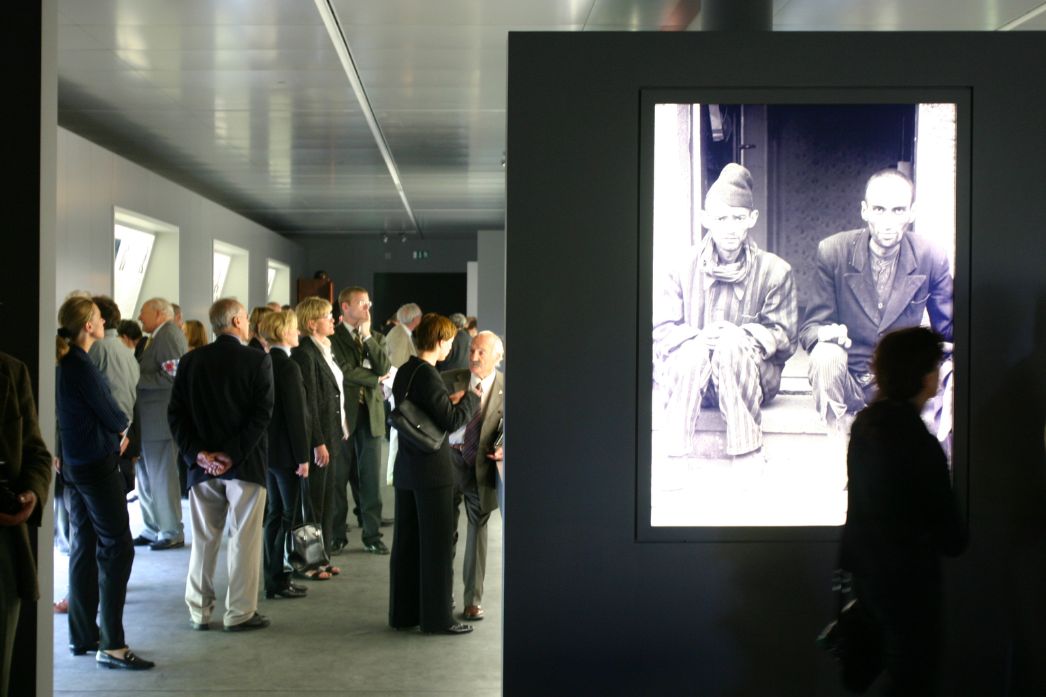
After the end of the German Democratic Republic (GDR), a new concept was developed for the memorial work at Mittelbau-Dora. In terms of content, this work focusses on the historical events taking place on these grounds. Structural relics and other sites bearing witness to the events have been uncovered and marked. The memorial facilities erected before 1989 have been preserved as documents of how the Nazi past was remembered during the GDR era.
The construction of an access tunnel made the historic tunnel system accessible again in 1995. The erection of a new museum building with a permanent exhibition, visitor information, bookshop, seminar rooms, an archive, a library, the collections and offices for the employees followed in 2005. A
In the early 2000s the former camp train station and the erstwhile industrial area of Camp Dora were also made accessible and signposted. In 2011 the remnants of the former camp prison were topped with concrete for their protection; the outline of the former prison courtyard was traced with tamped concrete.
The former camp grounds continue to be made accessible. In the course of international summer camps the foundations of barracks are made visible by laying local rock.
The removal of the border facilities after 1989 also made the Mittelbau concentration camp’s largest subcamp in Ellrich-Juliushütte accessible again. There the former inmates’ camp had been divided by the inner-German border after 1945. The former inmates’ lodgings had been demolished, first in the GDR and later on the Western side as well.
In 1995, members of the

